The waterfall is one of Mother Nature’s most tranquil yet thrilling and stunning works of art. Watching water fall from a rock face into a lagoon or wild river has a certain allure. It’s magical, both the noise it creates, and the sheer amount of water involved.
There are countless waterfalls scattered around the globe, but today we will be looking at the tallest waterfall Arizona has to offer.
Tallest Waterfall in Arizona
Cheyava Falls, the tallest waterfall in the beautiful state of Arizona, rises high above the North Rim of the Grand Canyon, near Honan Point, and flows down 800 feet of Redwall limestone cliffs.
This beautiful waterfall, which is the tallest waterfall in the Grand Canyon, is a popular choice among those looking for an extremely challenging excursion inside the national park.
The History of Cheyava Falls
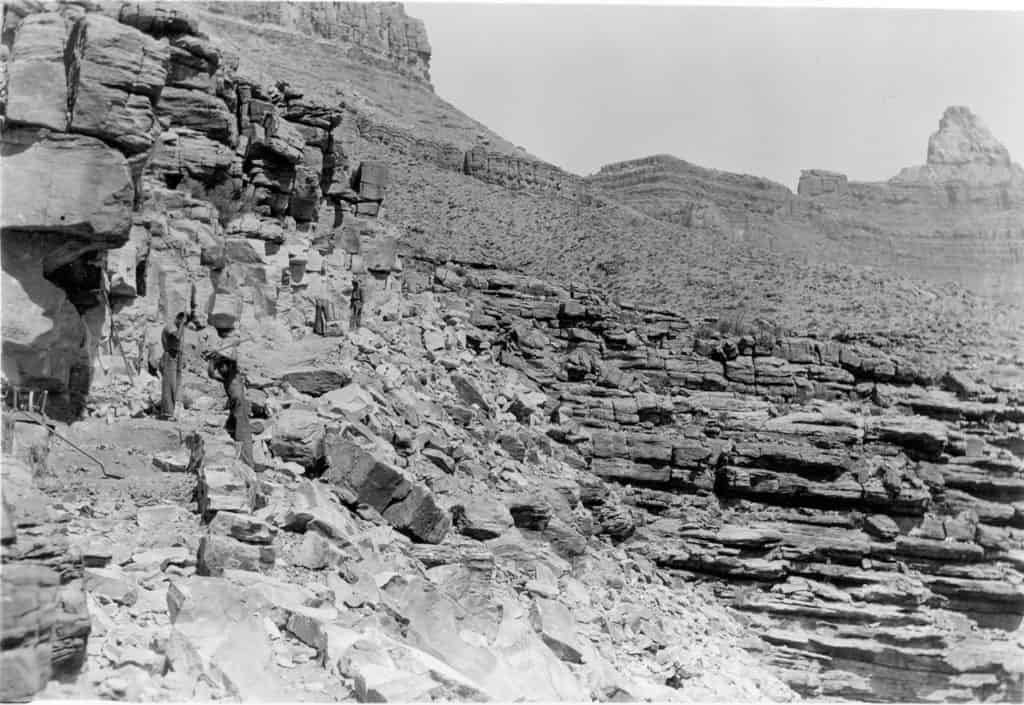
The Kolb brothers, pioneering canyon photographers, explored Cheyava Falls in 1903.
©Grand Canyon National Park / flickr / CC BY 2.0 – License
Cheyava Falls is only a trickle most of the year. However, following a wet winter, it spews from the rock face in a sequence of cascades. The Kolb brothers, pioneering canyon photographers, explored Cheyava Falls in 1903.
Unconfirmed reports of Thunder River booming inexplicably far below the western edge of the Kaibab Plateau date back to 1902. However, explorers and miners never recorded a similar thundering of Cheyava Falls near Clear Creek to the east. This is likely due to cold winter temperatures and snowfall forcing people to lower elevations towards the north.
Where Is Cheyava Falls Located on a Map?
Cheyava Falls is accessed by foot, first hiking around 18-20 miles (often done in two days) to the trailhead at Clear Creek Campground, then walking a further eight or so miles to reach the falls.
Visiting Cheyava Falls

Clear Creek is located at the base of the Grand Canyon.
©Bernadette Heath/Shutterstock.com
You can visit the cascades from the North Rim from mid-May to mid-October. However, the greatest time to see Cheyava Falls is in the spring after a wet winter. Although visiting the area is free, camping in the woods requires a $10 permit. The park charges an extra $5 per additional person.
You must hike roughly eight miles from Clear Creek at the base of the Grand Canyon in order to observe the falls safely. The trail, which was constructed in 1933 by the Civilian Conservation Corps, rises over a thousand feet. But the trek will be well worth it. The view is jaw-dropping against the canyon’s impressive backdrop.
Wildlife Around Cheyava Falls
When exploring Cheyava Falls, you’ll experience more than just breathtaking sights. Interesting animals have made the place their home. Watch out for creatures flying through the air or strolling along the pathways.
Rocky Mountain Elk
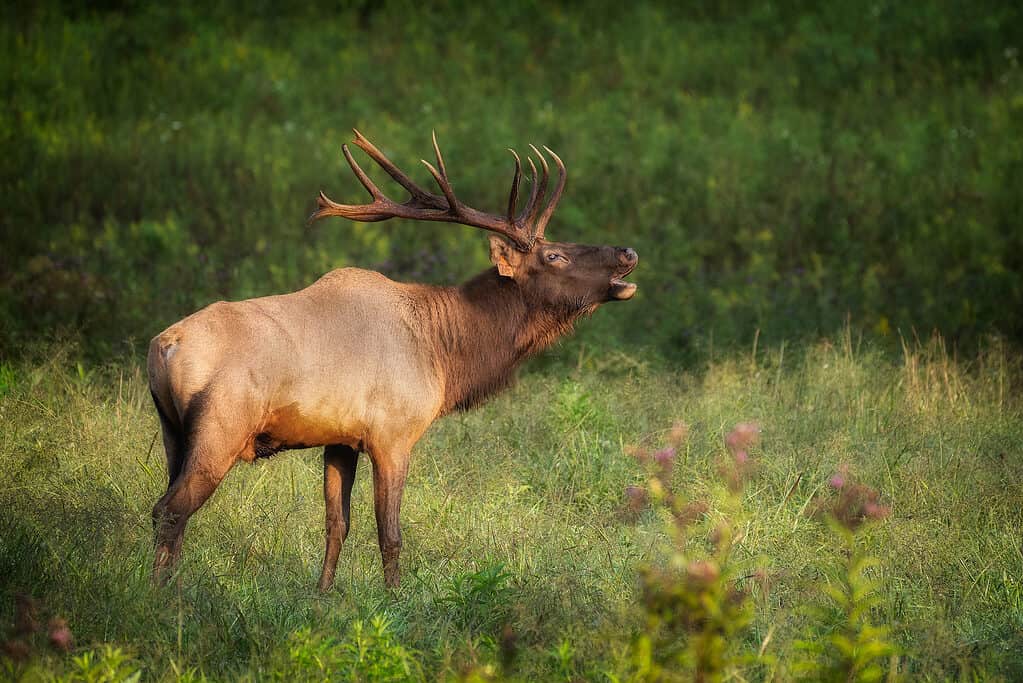
Adult elk can weigh up to 500 pounds for females and 700 pounds for bulls.
©iStock.com/MattCuda
Rocky Mountain elk, which were first brought to Arizona in the early 1900s, eventually found their way into Cheyava Falls. The area is now home to about 100 of these animals. Adult elk can weigh up to 500 pounds for females and 700 pounds for bulls. The males can be observed bugling throughout their rut, which lasts from late August until early October.
California Condor
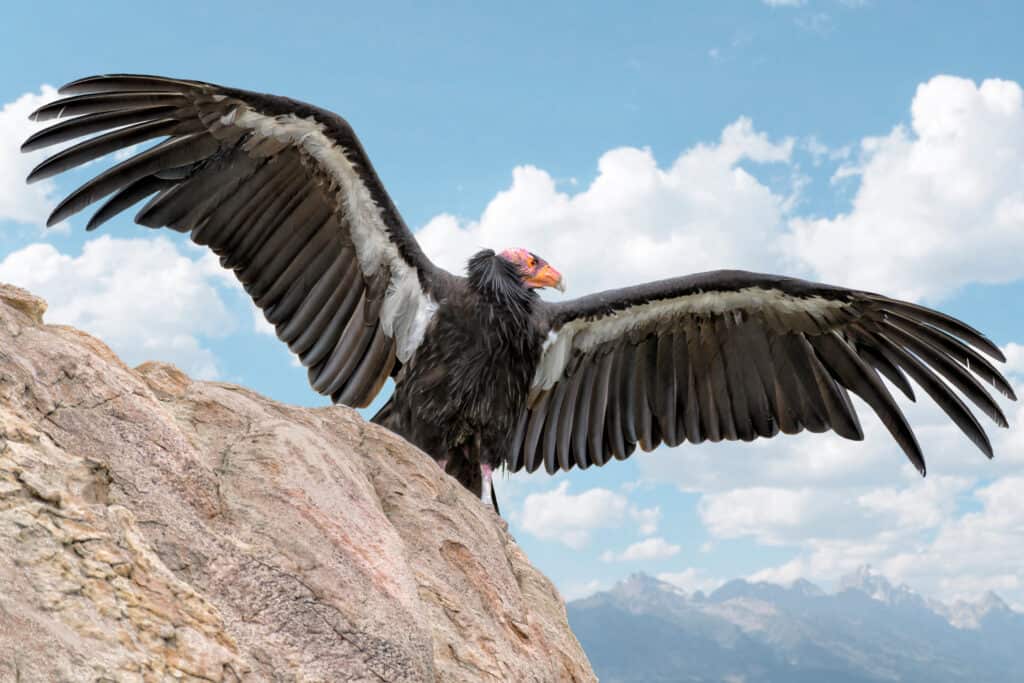
California condors ended up on the endangered species list in 1967.
©Barbara Ash/Shutterstock.com
With a 9.5-foot wingspan, the California condor is the biggest bird in North America. It is black with white markings underneath its wings and a bald head. Hunting, egg collecting, and lead poisoning all contributed to population declines during the 20th century. In fact, they ended up on the endangered species list in 1967. Thanks to reintroduction operations in 1992, one of the three wild condor communities is now found in the Grand Canyon.
Ringtail
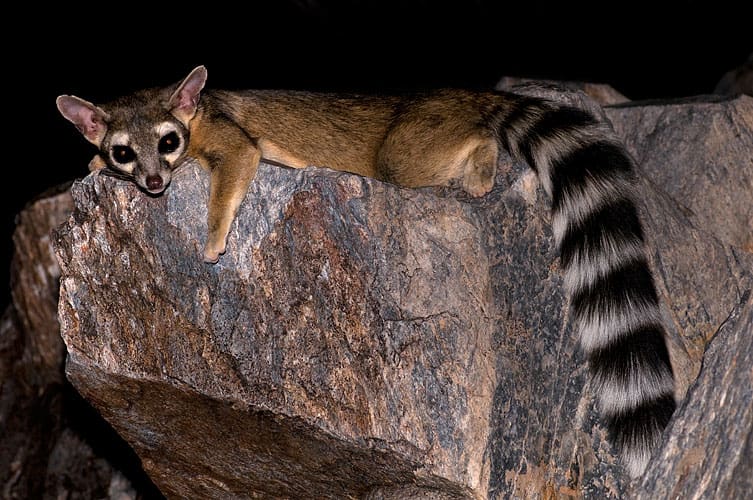
Humans hardly ever get to see these adorable animals since they are only active at night.
©Robertbody at en.wikipedia / CC BY-SA 3.0 – License
The ringtail is a common species at the Grand Canyon and the state mammal of Arizona. However, humans hardly ever get to see these adorable animals since they are only active at night. Ringtails have excellent hearing and vision. Their black and white striped tails are used for balance, as well as to frighten away potential predators. With the exception of the breeding season, they are solitary creatures and wary of people.
Bighorn Sheep
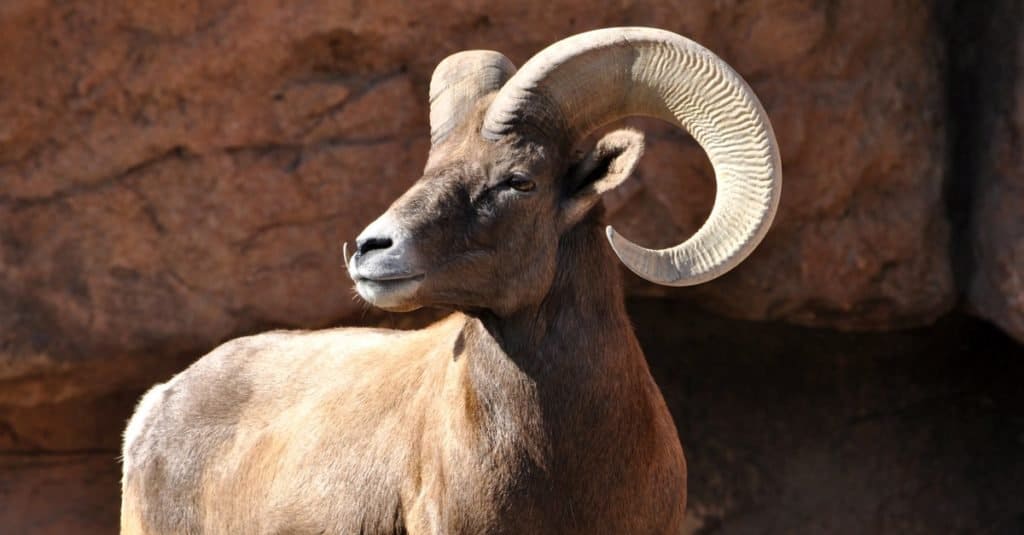
Both sexes have horns; however, the male’s horns are bigger and more arched.
©Georgia Evans/Shutterstock.com
The flexible, spongy hooves of bighorn sheep are well adapted for the desert climate, allowing them to walk over cliffs and up steep slopes with ease. Rams, another name for bighorn sheep, can weigh up to 250 pounds, making them the largest native animal in the region. Both sexes have horns; however, the male’s horns are bigger and more arched. Rams clash horns in a struggle for supremacy until one of them submits.
The photo featured at the top of this post is © Ronan Odonahoe/Shutterstock.com
Thank you for reading! Have some feedback for us? Contact the AZ Animals editorial team.






